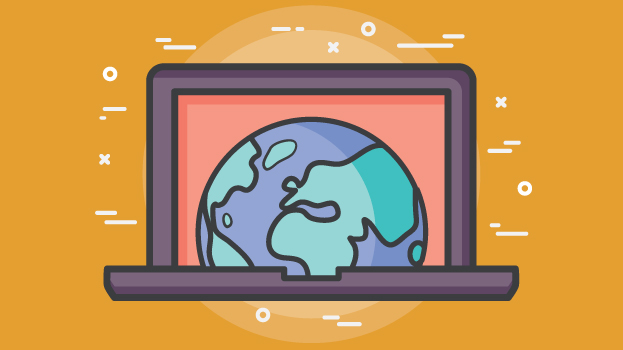The global crisis and recession induced by the COVID-19 pandemic, has fundamentally changed the way humanity works and has been a catalyst to unprecedented changes in every industry.
Although it came without warning and caused chaos globally, the pandemic wasn’t all bad. Similarly to past recessions, the COVID-19 crisis has ushered an era of opportunity for new industries to sprout and shape consumer behaviour for decades.
And although this means some existing industries will struggle to survive, others will boom due to being forced to reform, restructure and transform themselves to fit within our new reality.
Whilst we’re still currently in the midst of the crisis and don’t have full visibility on the future just yet (do we ever?), here are our educated predictions of top industries set to boom as our “new normal” comes to life:
Healthcare
Having been essential in our fight against the COVID-19 coronavirus, the healthcare sector – comprising hospitals, medical equipment, diagnostics and pharmaceuticals – is poised for tremendous growth.
The pandemic has reminded us of many key essentials, but one of the biggest takeaways has been remembering how important it is to have skilled medical staff and top end medical equipment to combat unpredictable deadly and contagious diseases.
Hence moving forward, governments worldwide are set to heavily invest in the healthcare industry in order to better prepare for potential future outbreaks.
In parallel to this, accessibility to healthcare is going to be top of mind for many around the world. Having boomed at the height of the COVID-19 pandemic due to mandated isolation, telehealth is set to become the norm, which means the industry will need to adapt to a digital world and audience.
This disruption is set to impact the entire healthcare lifecycle – from testing, medicines, telemedicine as well as health tech such as on-demand doctor apps.
Although this revolution is merited, it’s worth noting that such disruptions will most certainly be marred by medico-legal, database and licensing concerns. Hence, if we are to embrace a more technologically savvy healthcare industry (such as 24-hour digital medical assistance), governments will also need to work closely with law and cybersecurity professionals for a smooth transition.
Fitness
In conjunction with the importance of having a strong healthcare system, the pandemic also highlighted how crucial it is to take care of our own health. Indeed, the healthier we are, the more resilient we are towards potential illnesses and the better our chances of recovery are if / when we do get sick.
Hence, as governments globally enforced self-isolation for the wellbeing of the community, the Fitness industry witnessed a spike in interest for at-home training with virtual trainers on demand.
An already growing industry pre COVID-19, the pandemic definitely gave it a huge boost with both avid gym goers as well as newbies investing in fitness apps and home equipment as a preventative measure.
Whilst brick and mortar gyms suffered immensely due to forced closures, the industry as a whole is set to continue growing as people worldwide make their health a top priority.
And although traditional gyms or fitness establishments will need to pivot to abide with the new health and safety constraints, the industry is set to continue innovating to keep up with demand.
Consequently, the pandemic has opened the door for both fitness professionals as well as fitness equipment providers to create new tech, smart sportswear, hybrid studios and push the use of social media to reach their increasingly health conscious audience wherever and whenever.
Education (E-learning And Tech)
The education sector as a whole is set to change dramatically post COVID-19 as it is forced to embrace technology and digital means on a large scale.
Although e-learning isn’t a new concept, it surged during the peak of the COVID-19 pandemic, and is set to continue growing as people embrace the convenience of being able to learn anywhere, at any time.
Educational institutions across the globe have traditionally been slow to change, and even slower to embracing technology. But with schools and universities forced to turn to homeschooling and virtual classrooms during COVID-19, traditional teaching standards are set to become a thing of the past.
The impact is expected to be seen from pre-school to higher education, offering flexibility of learning to students, as well as flexibility of teaching to teachers. And as learning becomes physically more accessible and flexible thanks to technology, we also predict (and hope) the cost of education to also decrease, making it more financially accessible to a larger section of society as well.
Furthermore, as the unemployment rate grows due to the crisis, many will be looking for ways to upskill and adapt to new jobs to increase their hireability. This paired with a growing population that seeks to experience multiple careers in one lifetime, the need for the education sector to grow and adapt is evident.
Consequently, we predict that in the next few years there will be a rise in the need for skilled professionals to not only develop better platforms for e-learning, but also invent new technology so as to respond to heightened demand.
Cloud Computing
As businesses, and even whole industries, turn to technology to adapt and function during the crisis and beyond, cloud computing is consequently set to grow exponentially.
Easy to use and scale, as well as highly customisable to suit businesses of all sizes and industry, cloud-based applications and platforms are set to become the bedrock of businesses looking to remain agile in a post COVID-19 world.
Already on the rise pre-crisis, the industry saw a huge spike in demand due to businesses having an immediate need to cater to a remote workforce.
By the same token, as businesses remain cost conscious due to the crisis, interest in cloud computing is set to continue growing as it simplifies the monitoring of resource consumption as well as eases cross-department collaboration.
All in all, by transitioning to cloud services, companies are able to move faster on projects and test out concepts without lengthy procurement and big upfront costs, because they’ll only pay for the resources they consume. This is a huge plus when drastic change can occur at the bat of a hat, as it did with the COVID-19 pandemic.
And with the rise of cloud computing naturally comes the increased need for cybersecurity…
Cybersecurity
As more industries and businesses endeavour to embrace technology within their business model due to COVID-19, the more the need to have a secure network is vital.
Indeed, with millions of people working from home and handling sensitive data remotely, security and privacy are paramount.
To that effect, as the amount of data being collected, processed, and stored increases each and every day, so does the volume and sophistication of cyber attacks.
With that in mind, it should come as no surprise that cybersecurity will be at the centre of the new era as every industry adopts digital transformation.
Not only will this result in the development of new technologies and devices, but it will also most certainly involve the use of blockchain, application program interface (API), and other advancements to limit the occurrence of cybercrimes and financial fraud, thus, creating many jobs.
E-commerce
Like many of the other industries mentioned above, e-commerce was already on the rise before the pandemic hit due to our increasingly digitised & globalised world looking for further convenience.
Yet, when communities were instructed to self-isolate and businesses were forced to stop trading by government decree to control the spread of the virus, e-commerce boomed not out of convenience, but out of necessity.
Paradoxically, that which made e-commerce so successful in the first place – consumers’ lack of time – was alleviated for many under quarantine. Yet, as stay-at-home orders continue to be lifted around the world, many report still being reluctant to go back to old shopping habits for fear of getting sick.
Further to this, millions of consumers created and reinforced new online buying behaviours and habits during isolation. As such, online grocery, apparel, and entertainment shopping is set to replace store visits permanently for many consumers.
With this in mind, many retailers will need to embrace technology to balance risk and survive the pandemic by getting them closer to customers, serving their needs, whilst still keeping the required social distance. This will most certainly result in a growing set of new categories of products and services joining the e-commerce bandwagon.
Although this industry growth is expected to be higher in emerging economies with the rise of internet penetration and data speeds, it’s undeniable that post-COVID-19, the e-commerce growth rate will outpace earlier predicted levels worldwide.
Logistics
As e-commerce continues to flourish, consequently so does the logistics and supply chain sector, but not without significant change.
Pre COVID-19, our globalised supply chain network was optimised to identify minimum lead times at the lowest possible price. However, rapid political developments, a shift towards consumers with a more eco-friendly mindset buying niche products as well as global pandemics have revealed the weakness that lies at the heart of this model.
As a result, for the industry to cater to growing needs, it will need to invest in regional logistic hubs to eliminate single-source dependencies, and to establish a flexible and adaptable supply chain.
This as well as “essential fields” such as the healthcare, agriculture and food industries requiring goods faster than ever, the logistics industry has an opening to fundamentally grow locally.
This should create more opportunities for logistic companies to adopt high end tech to reduce cost, time and waste, which will inevitably create more jobs.
Robotics & Automation
The unexpected nature of the COVID-19 pandemic has prompted several industries to seriously think about adopting automation technologies as well as look into robotics to better manage operations as well as allow for an increasingly remote workforce.
Truth be told, the coronavirus dealt a stunning blow to supply chains, logistics and fulfilment, shutting businesses and economies down. But unlike other disasters we commonly encounter, this crisis didn’t impact equipment or infrastructure, but instead affected the workers and their health.
Even before COVID-19 came to be, the adoption of robotics, automated material handling equipment, artificial intelligence (AI), voice, and other advanced technologies into warehouses and distribution centers (DCs) was on the rise, driven by the need to manage high-velocity operations with limited—and increasingly expensive—labour resources while meeting the ever-changing demands generated by digital commerce.
So it should come as no surprise that post-COVID-19, many manufacturers are expected to increase in-house manufacturing through automation and robotics rather than outsource manufacturing to other countries to mitigate global supply chain risks in the future.
Although these are but predictions, and far from certainties, we can all agree that the COVID-19 crisis has categorically transformed the way we live and work, and will have a ripple effect on many aspects of our lives for years to come.
So much so that the industries and businesses which will survive and thrive post-crisis are those which embrace change, agility, digital, and a remote working culture. Those that will boom will be those ready to adapt.













 July 15, 2020
July 15, 2020 






